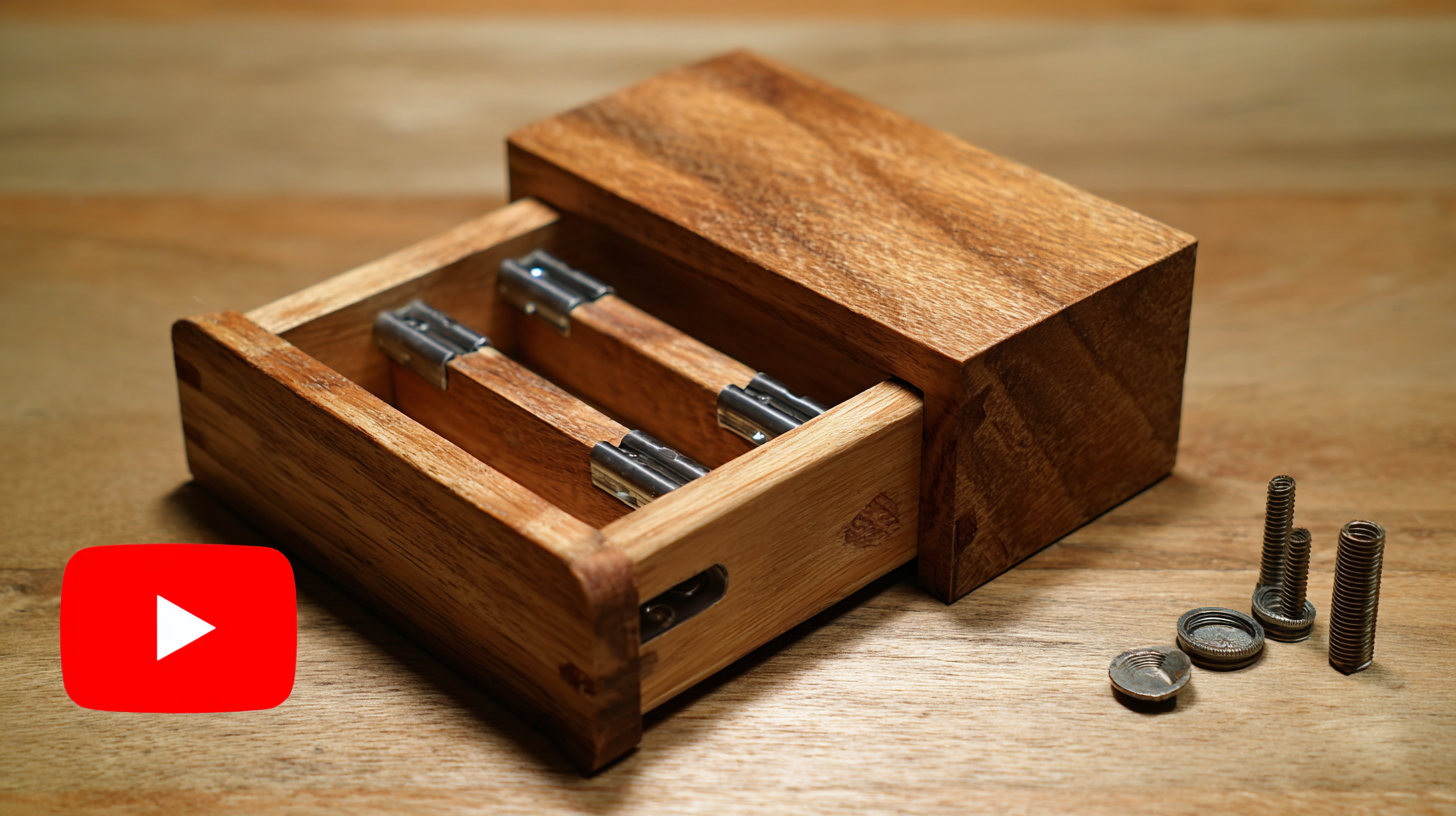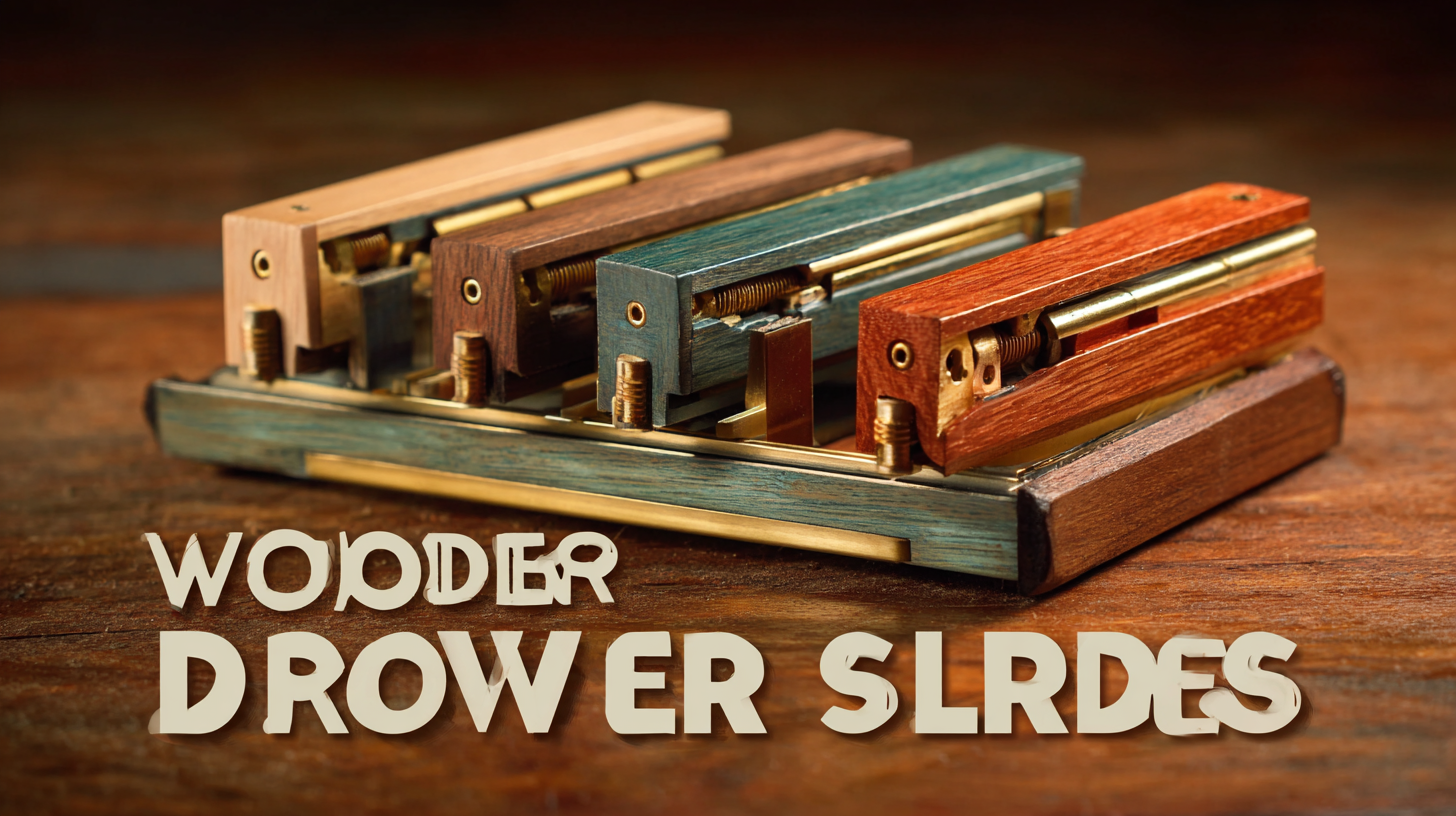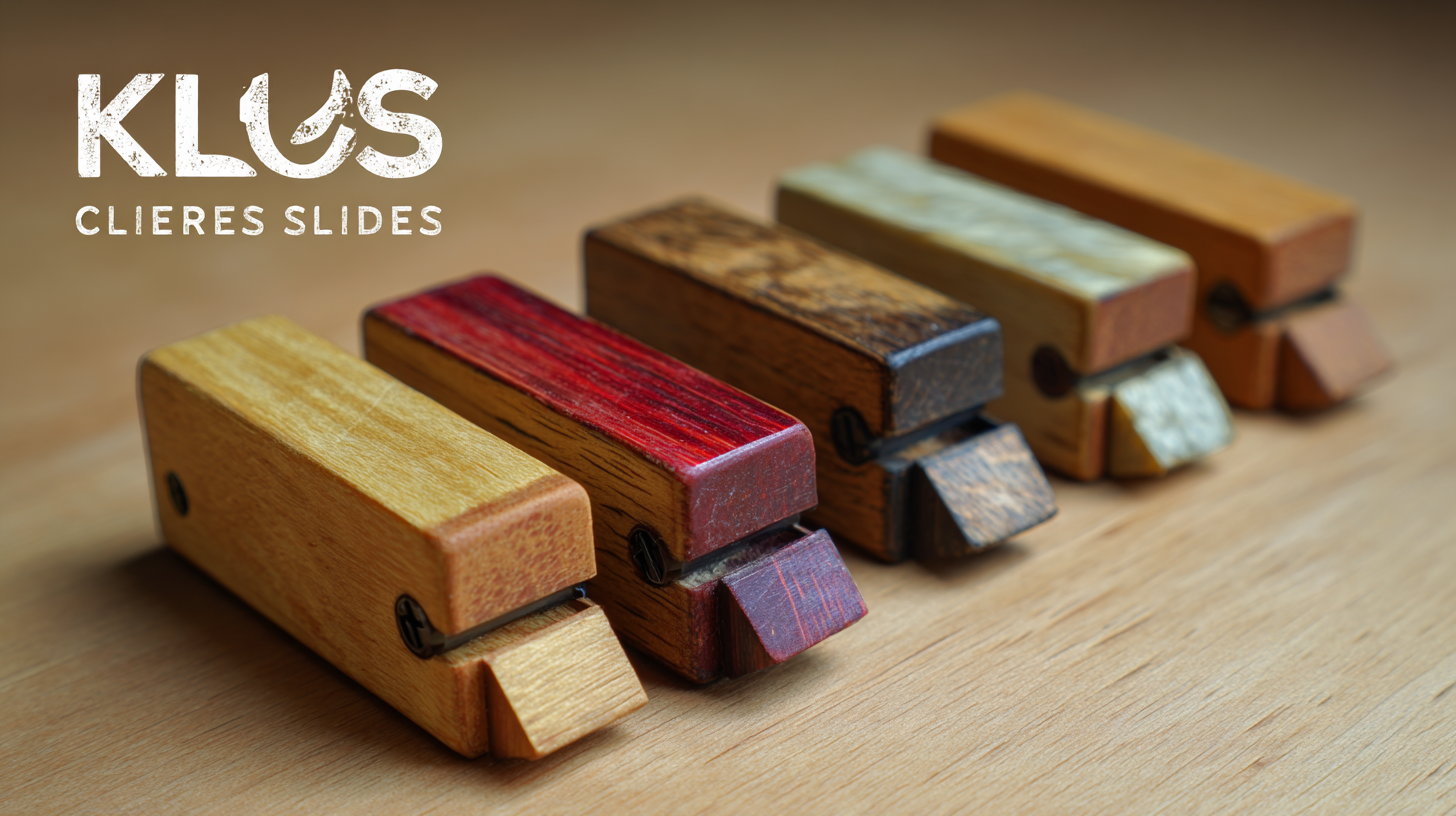Leave Your Message
In the world of woodworking, the choice of drawer slides can significantly impact both the functionality and aesthetics of a project. Woodworking drawer slides come in various types, each designed to meet specific needs, whether it be for kitchen cabinetry, furniture, or custom storage solutions. According to a report by the Woodworking Machinery & Supply Conference, the demand for high-quality drawer slides has risen by 15% over the past three years, underscoring their importance in woodworking applications. Selecting the right slides not only enhances user convenience but also contributes to the longevity and durability of furniture. This article will guide you through the exploration of different varieties of woodworking drawer slides and how to find reputable suppliers, ensuring that your projects achieve both efficiency and elegance.

When it comes to woodworking, selecting the right drawer slides is crucial for functionality and aesthetics. There are several types of drawer slides available, each with their own unique features and benefits suited for various applications.
For instance, side-mounted slides are a popular choice due to their ease of installation and adjustability. They allow for a smooth operation and are ideal for lighter drawers in kitchens or bathrooms.
In contrast, under-mounted slides offer a more concealed look, which is highly desirable for modern cabinetry. These slides provide excellent stability and are designed to support heavier loads, making them perfect for larger drawers in workshops or utility spaces. Additionally, soft-close mechanisms have become increasingly popular, providing a gentle closing action that prevents slamming and enhances the user experience.
Understanding these distinctions can help woodworkers make informed decisions, ensuring their projects not only look great but also function seamlessly.
When selecting drawer slides for woodworking projects, evaluating load capacity and durability is paramount. Load capacity refers to the maximum weight a slide can support without failure. It's critical to choose slides that can handle the anticipated weight of the drawer's contents, as underestimating this can lead to malfunction or premature wear. For heavier items, consider full-extension slides that are robust enough to provide stability, ensuring a smooth operation throughout their lifespan.
Durability is another essential factor, as drawer slides are subjected to repeated use over time. Materials such as stainless steel and high-quality polymers offer increased resistance to wear and corrosion. When selecting slides, inspect their construction for features like ball-bearing mechanisms, which enhance glide and reduce friction.
**Tip 1:** Always check the manufacturer's specifications for both load capacity and recommended use cases for the slides. This will help in making an informed decision tailored to the specific project.
**Tip 2:** Test the slides before installation. This can help determine the smoothness of operation and whether they meet your project's weight requirements and durability expectations.
**Tip 3:** Consider the environment in which the drawer slides will be used. For damp or humid areas, opt for slides with corrosion-resistant finishes to ensure longevity.
| Type of Drawer Slide | Load Capacity (lbs) | Durability (Cycles) | Ideal Application | Material |
|---|---|---|---|---|
| Ball Bearing Slides | 100 | 100,000 | Kitchen Drawers | Steel |
| Euro Slides | 75 | 50,000 | Office Cabinets | Aluminum |
| Soft-Close Slides | 90 | 80,000 | Bathroom Cabinets | Metal |
| Undermount Slides | 50 | 70,000 | High-End Furniture | Composite |
| Heavy-Duty Slides | 200 | 120,000 | Tool Storage | Steel |
When it comes to choosing the right drawer slides for your woodworking projects, understanding the difference between soft-close and self-close mechanisms is essential. Soft-close slides employ a hydraulic system that gently pulls the drawer closed, eliminating the risk of slamming and providing a smooth, quiet operation. This feature is particularly beneficial in environments where noise reduction is appreciated, such as kitchens and living areas. Moreover, soft-close mechanisms extend the life of both the drawers and the slides by preventing wear and tear from abrupt movements.
On the other hand, self-close slides offer a more straightforward solution, automatically closing the drawer once it’s pushed to a certain point, often with a satisfying click. This mechanism is ideal for high-traffic areas where efficiency is key, making it easier to keep your space tidy and organized. While they may not have the same level of cushioning as soft-close slides, self-close mechanisms are known for their reliability and ease of use, making them a practical choice for utility drawers. Ultimately, the best option varies depending on your project's specific needs and the ambiance you wish to create.
This chart compares the ideal applications and user preferences for Soft-Close and Self-Close drawer slide mechanisms, highlighting their advantages for different woodworking projects.
When selecting drawer slides for woodworking projects, the choice of material can significantly impact both functionality and aesthetics. Traditional wood slides offer a classic look and can enhance the overall design of a piece. However, they may not provide the smooth action or durability found in metal alternatives. According to a recent industry report by Hettich, wood slides are suitable for lightweight applications, where the charm of craftsmanship is prioritized. Yet, as the report notes, they typically have a lower weight capacity, making them less ideal for frequently used drawers.

Metal slides, on the other hand, are increasingly favored for their robustness and efficiency. Studies indicate that high-quality steel slides can support loads of up to 100 pounds while maintaining smooth operation and longevity. Companies like Blum and Accuride have pioneered this sector, offering ball-bearing designs that minimize friction and improve durability. Additionally, metal slides are less susceptible to moisture, making them a better choice for kitchen and bathroom applications.
Beyond wood and metal, hybrid options made from engineered composites are gaining traction, providing a balance between aesthetic appeal and mechanical performance. As woodworking continues to evolve, understanding these material choices allows craftsmen to tailor their projects to the needs and environment of their users.
The global manufacturing landscape for drawer slides is evolving rapidly, influenced by urbanization and the increasing demand for sophisticated furniture fittings. Recent trends indicate that as urban living spaces shrink, the need for multifunctional and space-saving solutions becomes paramount. This shift is prompting manufacturers to innovate and expand their product lines, catering to diverse customer needs while maintaining quality standards. For instance, advanced manufacturing capabilities in regions like China are driving the creation of innovative designs that not only enhance functionality but also appeal to aesthetic sensibilities.
Tips for selecting the right drawer slides for your projects include considering weight capacity and ease of installation. It’s essential to match the slide's load-bearing specifications with your intended use to ensure durability. Additionally, opting for slides with ball-bearing mechanisms can enhance smoothness and longevity, especially in high-usage areas.
Moreover, keep an eye on sustainable practices in production, as more companies are recognizing the importance of eco-friendly materials and manufacturing processes. Choosing products from manufacturers that prioritize sustainability can contribute positively to your project's environmental impact while providing high-quality solutions.

